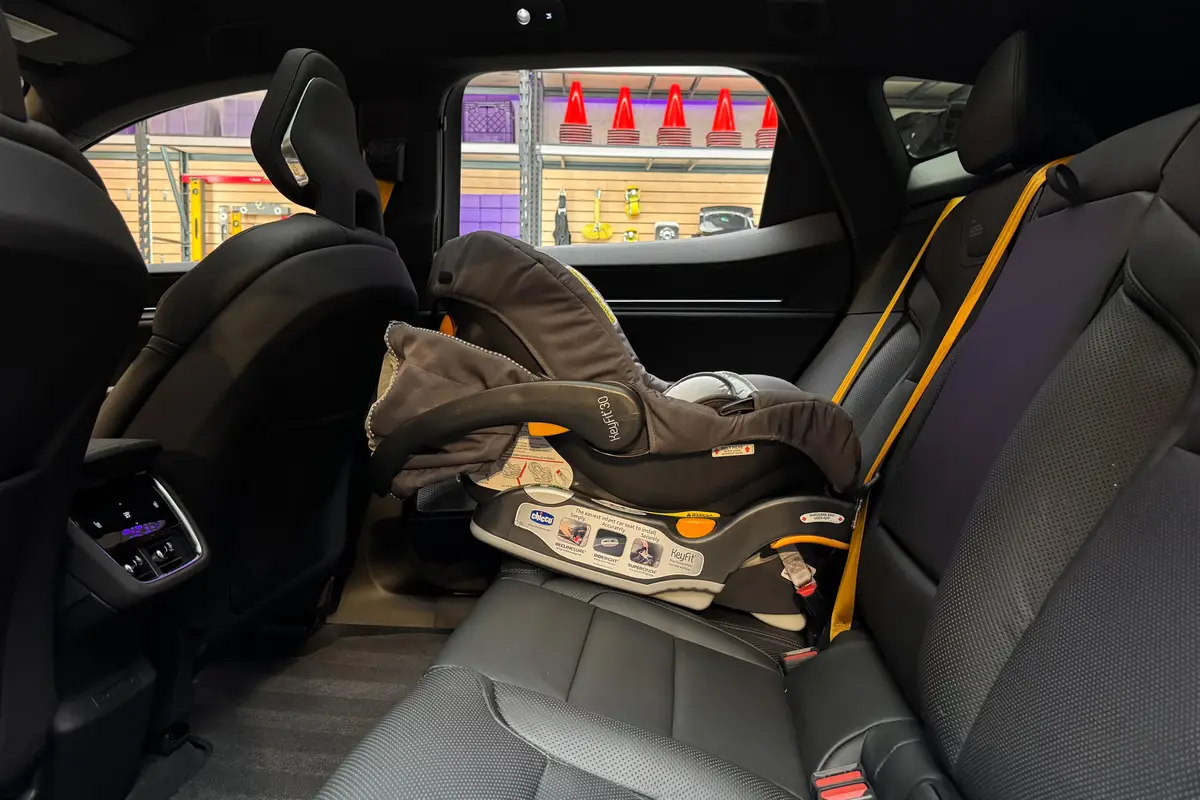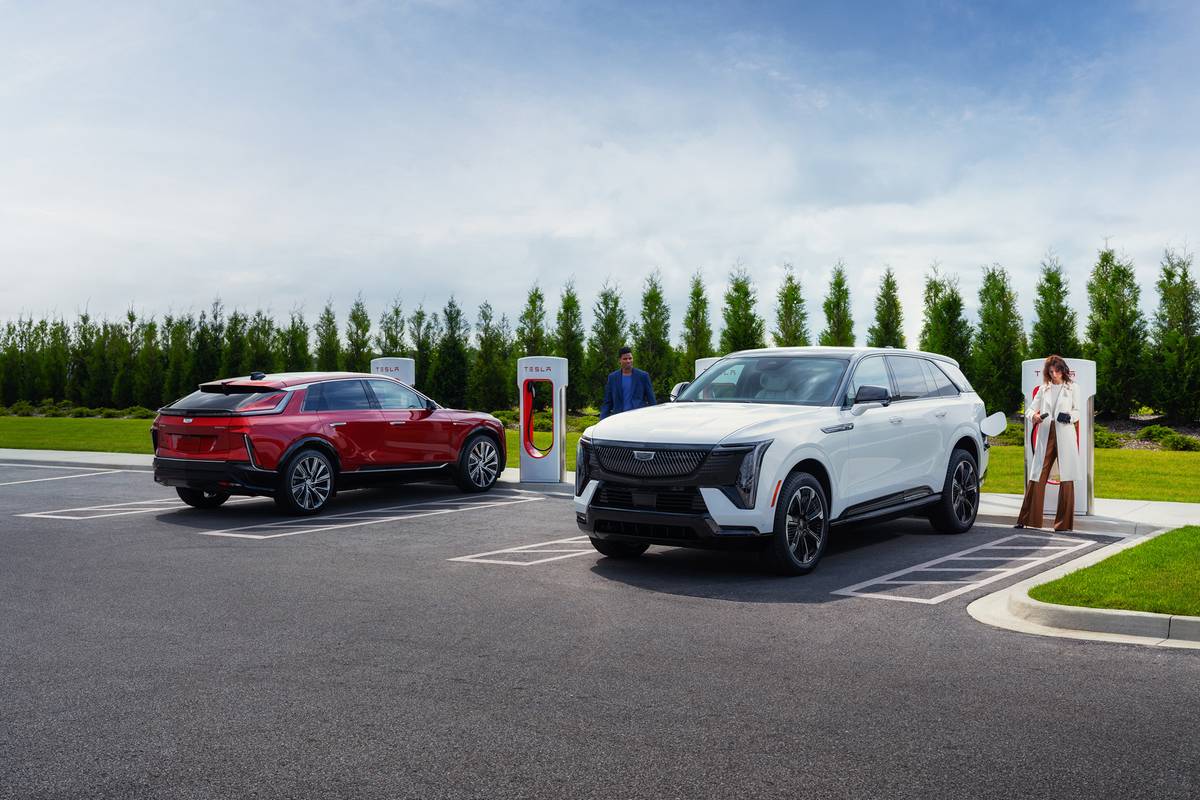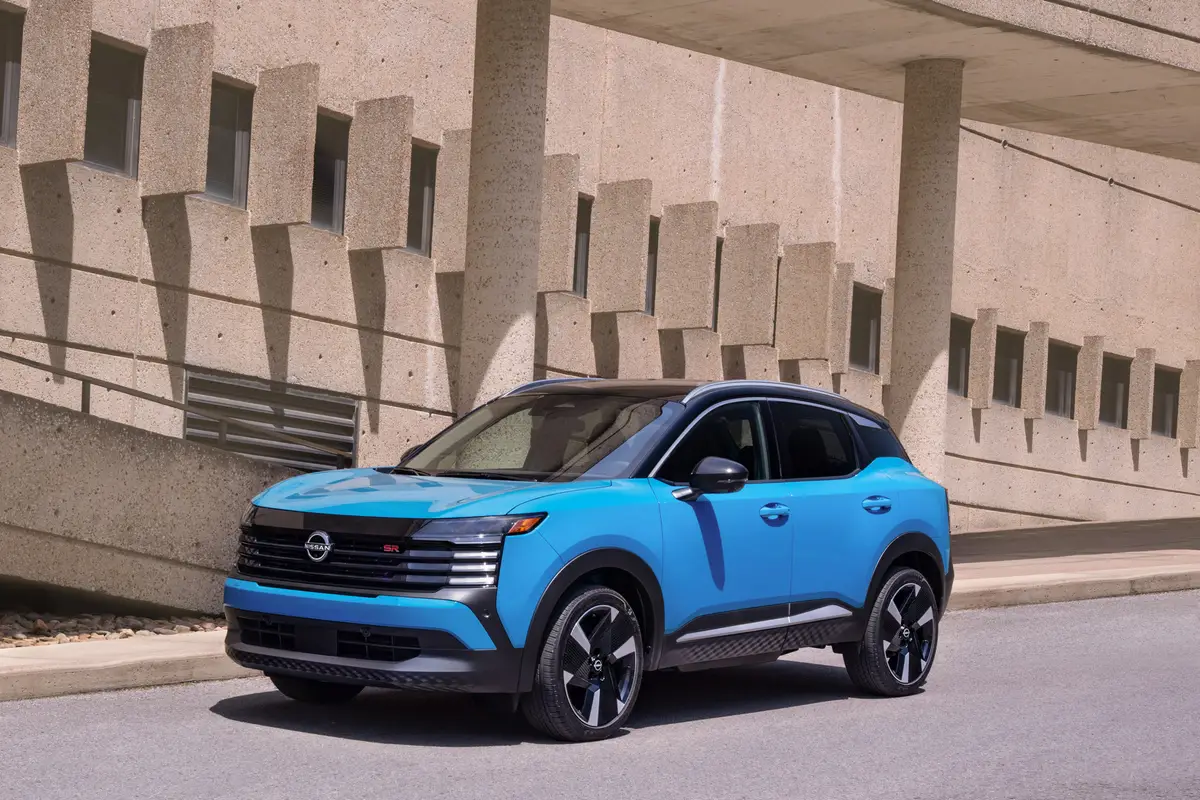chicagotribune.com's view
Thanks to Lincoln Mercury, someone is finally paying attention to the fanny.
For too long the fanny has simply been the butt of jokes and not the object of attention by the auto industry.
Sure, the industry pleases the eyes with dramatic styling, and the ears with melodic tunes on the CD player, but other than stretching a yard of cow skin over a sponge cushion covering a metal spring and calling it a bucket seat, the industry has done little to please the fanny.
Sad, because wherever a vehicle takes our eyes and ears, the fanny follows.
Enter Lincoln Mercury and a mid-year option on the 2000 Lincoln Navigator sport-utility vehicle called Climate Control front seats ($495), which provide heat in the winter and air conditioning in the summer.
The industry has offered heated leather seats for what seems an eternity. Anyone with the dough to afford a car with leather seats didn’t want a frozen fanny when butt met leather on a subzero Snow Belt morn. Without heated seats the only solution to the problem was cloth covers–hardly the accessory for a prestige luxury car.
Finally, someone has realized that the same fanny that shivers in the winter, burns in the summer when in contact with Elsie’s former outer shell.
We had the opportunity to put the climate-controlled seats to a test in a 2000 Navigator and found it a noteworthy surprise-and-delight feature that performs as advertised.
It was hot and humid when we slipped behind the wheel, reached for the instrument panel switch to activate the cabin air conditioning and eased back into the bucket for a ride to the store. The cool air coming from the ducts in the dash felt good, but even after several minutes the back of the shirt and pants were glued to the leather.
After spending considerable time at the store, the heat and humidity had filtered back into the Navigator’s cabin by the time we opened the door for the return trip. It was then we spotted a button along the lower side of the driver’s seat with two settings–cool and heat–and a dial with settings from 1 to 5. There is a similar button on the passenger side.
We flicked the button to cool, dialed it to 5, climbed in the cabin and began the trek home. Within minutes, not only was the air from the dash d ucts cooling our face, the air conditioning unit in the perforated leather seat had freed our shirt and pants from their glue-like grip on the cushion.
And there was an added benefit. Without clinging to the seat back and bottom, our body temperature seemed to drop a few degrees and we felt comfortable enough to turn the rush of cool air from the dash down a couple of notches.
“On a hot day, you normally sweat and stick to a leather seat and are uncomfortable,” said Jim Rogers, general marketing manager with Lincoln Mercury. “With an air-conditioned seat, you don’t sweat or stick and remain comfortable on your trip.”
Even on full blast, the cabin air can’t cool things quickly enough to keep your clothes from wrinkling. With climate-controlled seats, travel discomfort is eliminated, and you and your clothes stay fresh.
Once you experience an air-conditioned seat, the reaction is “Why didn’t they think of that 20 years ago?” And you have to w onder how cupholders beat air-conditioned seats to market by at least 20 years.
Ironically, Rogers said consumers have not asked for air-conditioned seats. It was Lincoln’s idea to bring them out without surveys or studies to determine whether consumers would accept the system.
“If we went out and asked customers, `Do you need a cool seat?’ they’d laugh at us. And when we show them the air-conditioned seat they say, `What the heck is that?’ But eventually you are going to see the climate-controlled seat throughout our lineup,” Rogers said.
If it has leather, it’ll have air.
There are only two drawbacks: The cooling/heating elements create a slightly stiffer seat than we appreciate; and the seat in the test vehicle came with power lumbar support, an inflatable bladder that made a slightly stiff seat feel like granite.
If Lincoln’s intent is to make a vehicle fanny-friendly, lumbar support defeats the purpose. Besides, when your body feels cool, you’ll feel comfy on a long-distance trip, so chances are you won’t feel the need to inflate the lumbar support.
There’s another noteworthy Navigator feature: power-adjustable brake/gas pedals. Push an instrument-panel button and the pedals motor closer to you so you don’t have to move closer to the pedals. The feature was first offered as an option for ’99 and is standard for 2000.
Adjustable pedals make the Navigator a one-size-fits-all vehicle for big and small drivers. It’s another accessory destined for more vehicles.
“We first offered it in the Navigator and now have it in the Mercury Sable sedan. And based on consumer reaction, it’s a safe bet you’ll find it available as an option throughout our line in the near future,” Rogers said.
Power-adjustable pedals are especially beneficial for short drivers who no longer have to move the seat closer to the wheel in order to reach the pedals and thus end up with their chest against the steering column, which houses the air bag.
And power-adjustable pedals are most beneficial in large vehicles such as Navigator, whose size tends to intimidate smaller drivers.
Rogers said the power pedals also are designed to reach one of the automaker’s long-term goals–to allow big or small, man or woman to feel comfortable driving any size vehicle.
Come to think of it, how many of us purchase a vehicle based on the fact that we are small or big so the vehicle must be small or big to match? Our size dictates vehicle size.
Rogers is saying the goal is to make a vehicle’s styling, performance and function dictate our choice, because the vehicle will adapt to our size.
Today Lincoln addresses our fannies, tomorrow our fantasies.
One last noteworthy item is reverse parking aid ($245)–sonar sensors embedded in the rear bumper that detect objects roughly eight feet behind your vehicle and that set off an alarm whose beeps intensify as you get closer to the human, animal, bike or garbage can not visible in the rearview mirrors.
The Navigator is powered by a 5.4-liter, 300-horsepower V-8 whose energy level surprises folks when you pull out to pass or leave the smaller sedan behind at the toll booth. However, the 12 m.p.g. city/17 m.p.g. highway rating makes you welcome its much-needed 30-gallon gas tank.
Ride is relatively smooth without a lot of unnecessary movement. The power steering is tuned to make the large animal as manageable as one half its size. About the only time Navigator “acts” big is when you have to slip it between the lines in the mall lot and the stripes make for a rather small target.
Base price of the 4×4 Navigator we tested was $46,210. Standard equipment includes easy-to-use dial-up 4WD; dual front and side air bags; power four-wheel disc brakes with anti-lock; 17-inch, all-terrain, radial tires mounted on aluminum wheels; cabin air conditioning; integrated illum inated running board s (no need for adjustable pedals if you can’t get inside to use them); power heated and signal mirrors (an arrow illuminates in the mirror when the turn signal is activated to give motorists behind an additional indication–along with the rear lamp signals– of your intention to turn); four-corner, load-leveling air suspension; speed-sensitive wipers; and remote keyless entry.
Among the options were auxiliary rear-seat climate control at $705 and, new for midyear, a navigation system at $1,995. The rear-seat climate control will keep passengers happy, the navigation system will keep your eyes off the road.
Despite fears by some that big SUVs are out to do harm to all smaller vehicles (everything but 18-wheelers), not once during the week with the Navigator did it exhibit signs of hungering or lusting for any coupes, sedans or mini-vans sharing the pavement. We never felt like a boulevard bully. Other than total comfort–thanks, in large part, to its roominess as well as air-conditioned seats–about the only other feeling that came over us in this huge SUV was that of safety and security.
But then we never had to fill the gas tank, so safety and security didn’t have to confront poverty.
>> 2000 Lincoln Navigator 4×4 Wheelbase: 119 inches Length: 204.8 inches Engine: 5.4-liter, 300-h.p., 32-valve V-8 Transmission: 4-speed automatic Fuel economy: 12 m.p.g. city/17 m.p.g. highway Base price: $46,210 Price as tested: Includes $245 for reverse park aid; $105 for skid plate; $705 for auxiliary climate control; $595 for cast aluminum wheels; $1,995 for navigation system; $595 for six-disc CD changer; and $570 for Alpine audio system with cassette. Add $665 for freight. Pluses: Optional fanny-friendly air-conditioned front seats. Standard driver-friendly power adjustable brake/gas pedals. Optional reverse park aid sonar detection. Standard illuminated running boards. All-season, dialup four-wheel-drive. Outstanding room and comfort. Minuses: Fuel economy. Cost of filling 30-gallon tank. >>
Latest news



